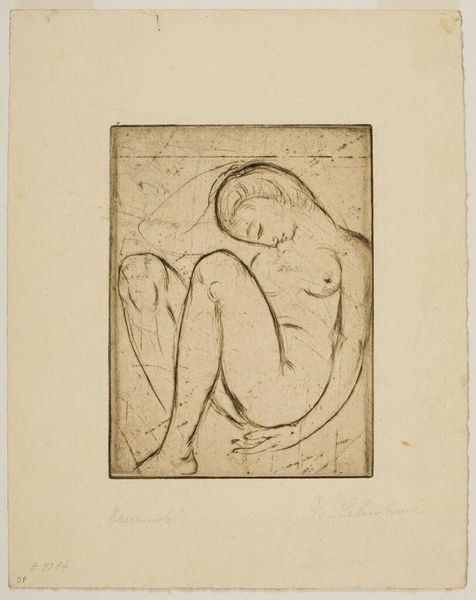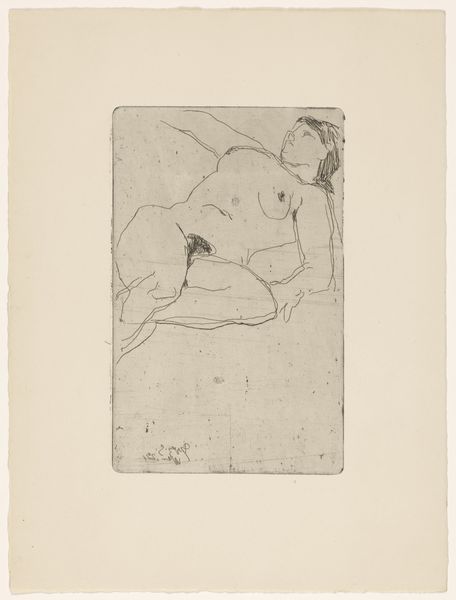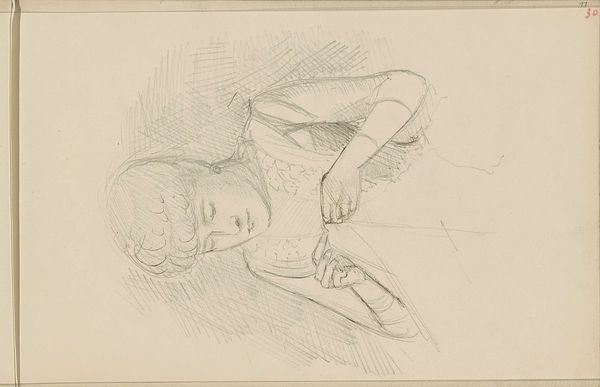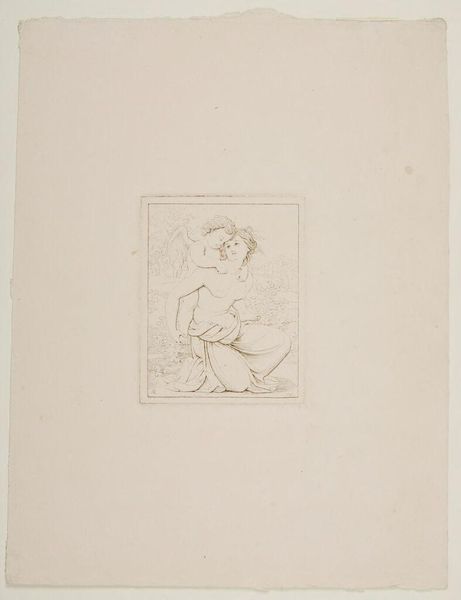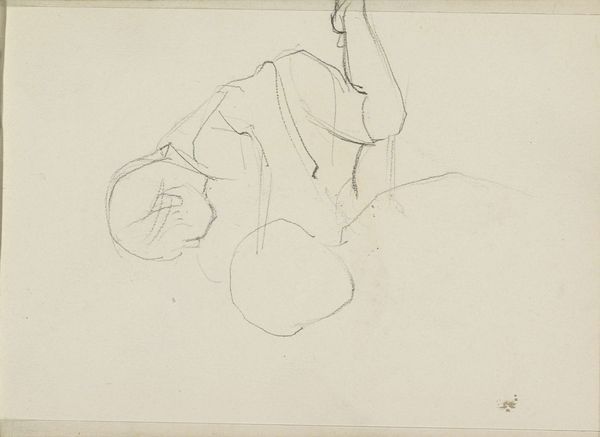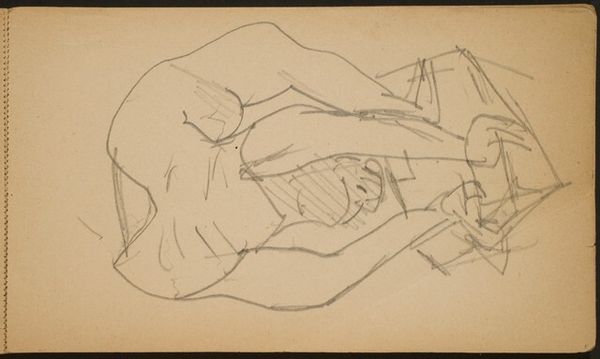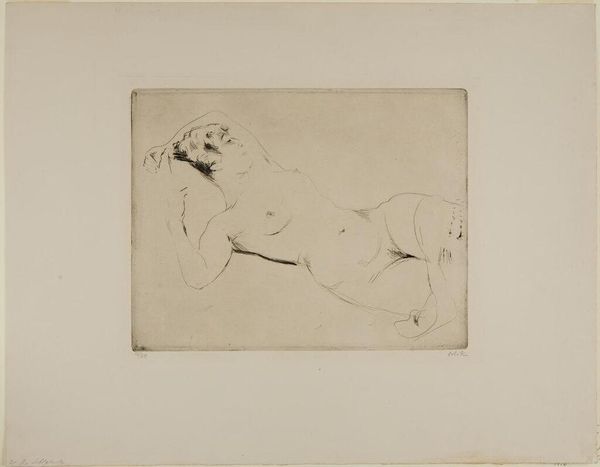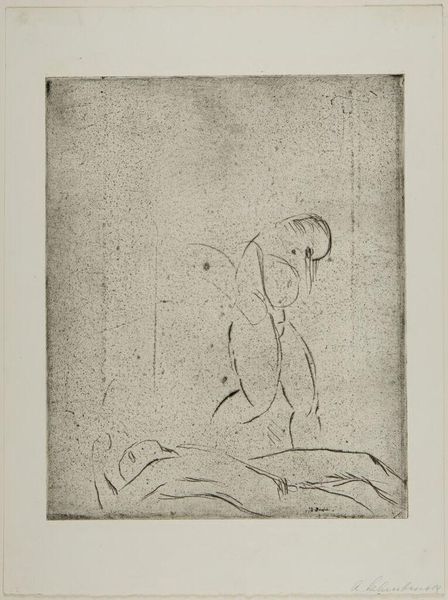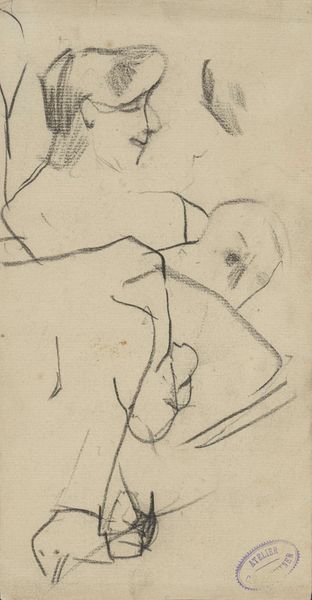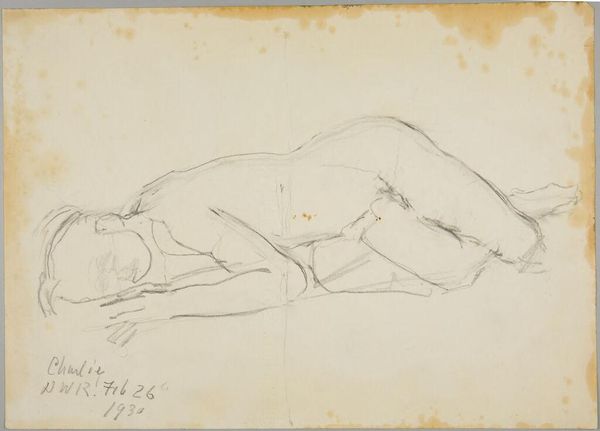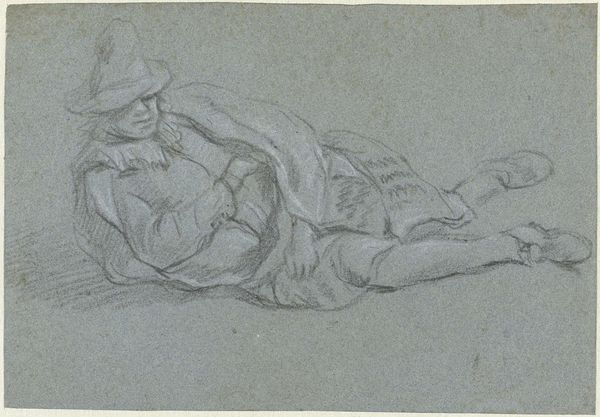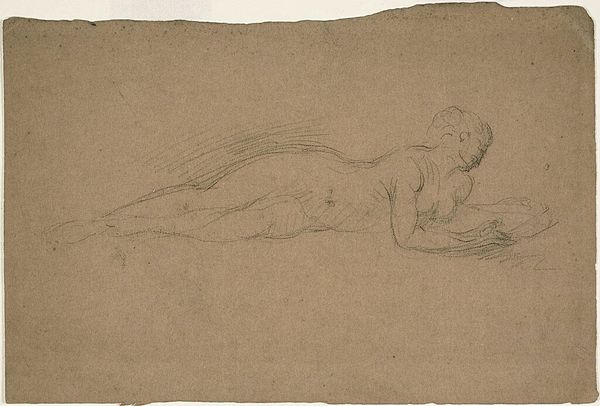
Copyright: CC0 1.0
Curator: Here we have Wilhelm Lehmbruck's "Reclining Woman," a delicate etching held at the Harvard Art Museums. Editor: The first thing that strikes me is its fragility; the etched lines seem almost tentative, vulnerable. Curator: Lehmbruck, working in the early 20th century, often explored themes of human suffering and existential questioning. This piece, while seemingly simple, speaks volumes about the female form and its representation. Where do you situate this piece in the context of contemporary discourse around the female body? Editor: Etching itself is a process involving acid, resistance, and labor. The means of production are telling, suggesting a process of controlled removal. This approach resonates with my understanding of the social construction of gender. Curator: Right. And I see her posture as not just reclining but perhaps retreating, maybe even a subtle critique of the objectification inherent in the artistic gaze. Editor: I hadn't considered that. I was too involved in the process itself. It’s amazing how the materials and making can still lead to multiple readings. Curator: Indeed, an artwork's power lies in its ability to invite diverse interpretations across time and cultures. Editor: Ultimately, it's the dialogue between the work, its creation, and its context that truly enriches our understanding.
Comments
No comments
Be the first to comment and join the conversation on the ultimate creative platform.
